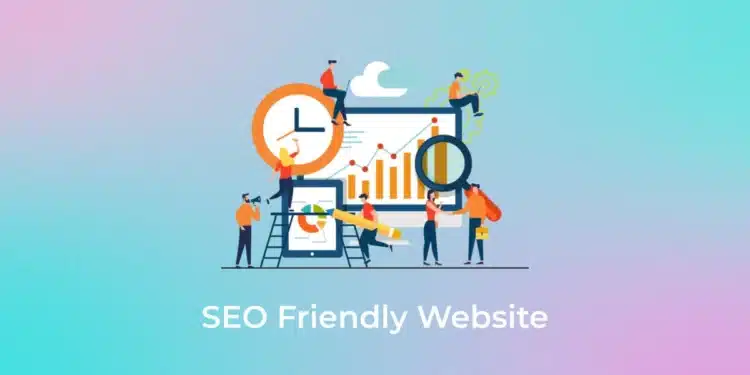Businesses often assume their website is SEO-friendly, only to discover later that something critical is missing. Even in India’s rapidly moving digital arena, merely having a website is insufficient. In addition to having a website, you will need a user-friendly site that can be easily discovered and crawled by search engines.
The following checklist will help you determine if a website is SEO-friendly or if it needs some additional care.
1. Does the website load quickly?
In a world where everyone wants things to be instant, slow-loading websites are a hard sell. If a website takes longer than a few seconds to load, people won’t stick around to see if it eventually completes. Google also considers loading speed in their ranking algorithm.
Take a look at how fast the website loads on desktop and mobile. If it lags, consider some optimisations like compressing images or cleaning up code.
2. Is the website mobile-friendly?
With so many people in India accessing sites on their smartphones, mobile optimisation isn’t optional. A site should adjust smoothly to different screen sizes, and all elements, text, images, and buttons should be easy to read and tap.
Google’s mobile-first indexing means the mobile version of a site is now the primary version used for ranking. So, a site that’s clunky on mobile could be missing out on visibility.
3. Are the URLs clean and descriptive?
A clear, structured URL helps both users and search engines. Instead of a messy string of numbers and characters, URLs should reflect the page content.
4. Is the content clear and valuable?
Content isn’t just about filling a page with text. It should answer the user’s query clearly and naturally. Think about how people in India search for information, questions, local phrases, or simple keywords. Content that provides clear, useful answers and uses natural language tends to perform better in search engine results.
5. Are there proper title tags and meta descriptions?
Every page should have a unique title tag and meta description that reflect what the page is about. These are what appear in search results, so they need to be concise, clear, and engaging. Avoid duplicate or missing titles.
6. Is there a good mix of internal and external links?
Links within the website help users navigate and spread SEO value across pages. External links to reputable sources show credibility. Just make sure links are relevant and add value to the content.
7. Are images optimised?
Images should load quickly and have descriptive alt text. This not only helps with accessibility but also gives search engines more context about the page. Oversized images slow down the site, which can hurt both user experience and SEO rankings.
8. Is the website secure?
Having an HTTPS connection isn’t just for e-commerce sites. It’s a trust factor for all websites, and search engines favour secure sites. Check for a padlock icon in the browser—if it’s missing, it’s time to install an SSL certificate.
9. Does the site structure make sense?
A clear structure helps users find what they need and makes it easier for search engines to crawl and index pages. Use a logical hierarchy with categories and subcategories, and make sure each page is linked within the site.
10. Is analytics set up and used?
Tracking performance is key to understanding how a site is doing. Tools like Google Analytics and Search Console provide insights into traffic, user behaviour, and what needs improvement. If these aren’t set up, it’s hard to know what’s working and what’s not.
Where support comes in handy
For businesses unsure about how their website stacks up, getting a fresh set of eyes can help. Many turn to an seo agency in Bangalore for practical advice on site structure, content, and technical aspects. It’s not about flashy solutions, but about refining what’s already there to make it more effective.
That’s where RepIndia can lend a hand. The team focuses on aligning website structure, content, and technical elements to ensure the site is not only SEO-friendly but also easy to use and navigate. They help identify gaps and suggest improvements that align with a business’s goals, always keeping things straightforward and manageable.
Why this matters more than ever in India
India’s digital audience is growing and changing. More people are coming online every day, using different devices, and expecting fast, seamless experiences. If a website isn’t optimised, it’s not just search rankings that suffer, it’s potential customer trust and engagement.
With diverse regional languages and search habits, businesses in India need to pay attention to how their content is structured and how easily users can find it. A site that’s clear, fast, and easy to navigate stands a better chance of holding attention.
How to start improving SEO-friendliness
Here are a few easy steps businesses can take after this self-assessment:
- Compress images to reduce load times.
- Review and update page titles and meta descriptions.
- Make sure the site is mobile-optimised and responsive.
- Add internal links to connect related pages.
- Check for broken links and fix them.
- Set up Google Analytics and Search Console to track performance.
Final Thoughts
Making a website SEO-friendly ultimately is about creating a site that’s genuinely helpful for both visitors and search engines. With the right questions and careful improvements, businesses can increase their online value. When seeking additional help, it’s easier to find the right partner, such as a trusted SEO provider in Delhi, than you think. With an appropriate roadmap, businesses can develop their websites into a resourceful tool to attract, engage, and convert visitors.
When the objective is constant, meaningful digital growth, teams like RepIndia are here to help keep everything organised so each part of the website’s potential is working together cumulatively for the best outcome.



